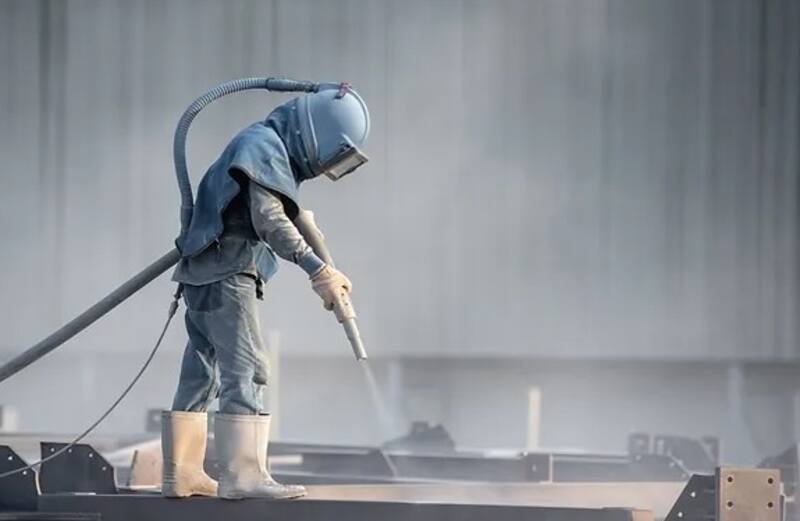Sandblasting is another name for abrasive blasting. It is a general word describing the action of accelerating solid particles on an object’s surface to smooth, shape, and clean a hard surface. Old finishes can be removed via the method of abrasive blasting, which involves utilizing specialized abrasive blasting equipment to shoot material across a hard surface. Additionally, it can remove rust or get the surface ready for painting.
The force with which the stream of abrasive material is propelled might also vary depending on the abrasive blasting method. It might be moderate in some situations or extremely harsh in others.
Typically, abrasive material and air are combined in a pressurized vessel for sandblasting equipment. The mixture is passed through a hand-held nozzle to direct the particles toward the surface or workpiece. Nozzles are available in a range of forms, dimensions, and materials. Because it is good at resisting abrasive wear, boron carbide is a common material for nozzles.
Tips For Choosing The Right Abrasive Blasting
Now that the role of abrasive blasting has been laid out entirely, it is essential to understand the top factors that influence it. Make sure that you consider all these factors before starting with the process.
1. Start with a softer surface
You’re probably better off starting with a softer medium if you’re still determining whether the surface you’re blasting can withstand a more abrasive compound. For smoother surfaces, like wood, walnut shells or corn cobs are great options because they won’t etch. They are among the most environmentally friendly blasting media because they also have the bonus of being biodegradable.
2. Start with small particles
In general, larger particles will leave deeper impressions than smaller ones, although firing large particles will produce fewer impacts than using an equivalent volume of smaller particles. Smaller particles have a more uniform profile while cleaning more quickly and with better coverage.
3. Remove paint with Aluminum Oxide
Compared to glass beads, aluminum oxide is more robust and sharper. It works well for routine cleaning tasks and paint removal; it’s also widely used for glass etching.
4. Consider The Hardness
In general, the more complex the particle, the deeper the profile it will impact unless a hard particle traveling at a fast speed breaks, imparting less force than ideal. Dirt, grease, oil, and paint can be removed with the help of softer abrasives, such as organic materials and polymers, without leaving an anchor pattern on the underlying substrate.
5. Shape Matters a Lot
The depth to which the article pierces the covering and underlying substrate depends on its form. Angular particles speed up cleaning and create crisper anchor patterns by cutting through soft coatings and rust. A more even surface is produced by rounded particles, which is beneficial for removing hard, brittle coatings and mill scale using the best abrasive blasting equipment.
6. Avoid Sand
Sometimes, “sandblasting” and “abrasive blasting” are used synonymously. However, many businesses are abandoning sand as a blasting medium for various reasons. Sand includes silica, which has been linked to severe respiratory problems. Sand also has a high moisture content, which increases the risk of blasting equipment failing too soon.
Carefully looking at the raw material being used plays a vital role in ensuring the process is carried out effectively. You must also pay attention to the exact need of your project to ensure that you select the best abrasive blasting method.


